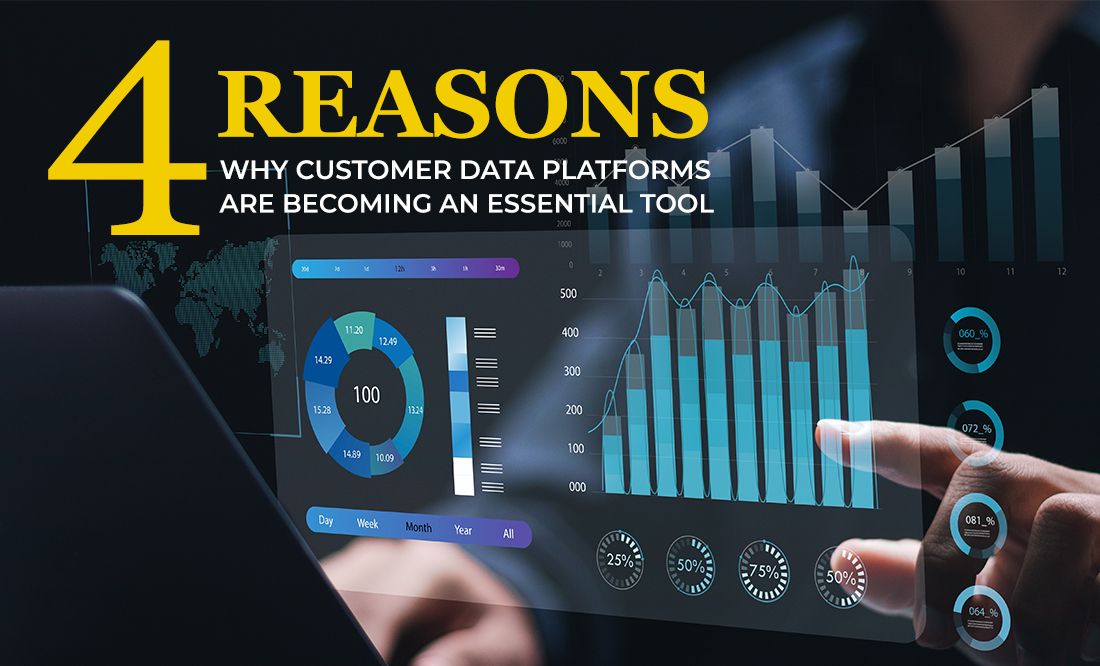A customer data platform (CDP) is the ultimate wingman for businesses looking to improve their customer relationships by organizing, analyzing and utilizing customer data in a more effective and efficient manner. Think of it as a central hub that connects all the other technology solutions in your organization. Different apps in your tech stack—CRMs, email marketing tools, ad management software—can share data between them seamlessly, allowing for more efficient and agile marketing campaigns.
That should be reason enough for CDPs to become an essential tool for enterprises. But there’s more.
Why Enterprises Are Lining Up For Customer Data Platforms
CDPs have seen remarkable post-pandemic growth in adoption. The market share for CDPs grew by roughly 22% between 2019 and 2020. There are several factors fueling the popularity of these platforms.
Growing Importance Of Customer Experience
Customer experience is the new differentiator. Deliver great experience consistently and you can build an army of brand loyalists. Falter on this front and you can quickly lose your customers. CDPs enable businesses to deliver an omnichannel customer experience. They are the central hub for disparate data sources, which means all the customer data is collected in one place. This allows data-sharing between sales, marketing, customer service and other business functions in real time. In effect, all your business functions have a unified view of the customer at all times and they can function toward the common goal of delivering a personalized experience to customers.
Third-Party Data Is Dying
Third-party cookies are dying. Google is expected to terminate third-party cookies in Chrome by 2024. Modern marketing methods rely on data to deliver results. Increasingly limited access to third-party data poses a challenge for marketing personalization. With CDPs, marketers can collect and unify first-party data, which has a slew of benefits. For one, with first-party data, it is easier to adhere to data privacy laws. Increasingly, governments around the world are getting stricter on data privacy. It is easier for organizations to manage first-party data—what data gets stored, how it is stored, how it is retrieved, etc. More control also means better data quality. And your marketing ROI depends a lot on the quality of data you have.
Customer Attention Is Hard To Get
One of the flip sides of technology is we are constantly bombarded with information. Consequently, our attention spans are declining. On average, people can focus on a screen for less than a minute. As a marketer, then, one of the biggest challenges is getting your customers’ attention. One of the solutions: reach the right customer at the right time with the right message. With CDPs, executing that level of personalization in your marketing campaigns becomes easier. Since all your data sources are connected, you can execute omnichannel campaigns that are adaptable.
Moreover, since your data is of higher quality, you can get more value out of artificial intelligence and machine-learning-enabled solutions. For example, AI tools can automate customer segmentation at a granular level, which further enables the personalization of marketing messages.
The Global Economy Is More Volatile
We are still recovering from the economic shocks of the Covid-19 pandemic. Ongoing technological revolutions are also shifting the labor markets. More people are quitting their tech jobs, for instance. Those factors are contributing to a volatile global economy. Things seem to be in a churn and there is an uncertain economic climate all around.
It then becomes prudent for businesses to cut their operational costs without sacrificing customer experience. Customer data platforms allow businesses to become operationally more efficient. Since all the data sources are connected, executing agile campaigns in real time becomes easier. Critical marketing budgets are used more efficiently, translating to healthier bottom lines.
Do You Need A CDP, Though?
CDPs are all the rage now. But not every enterprise needs a CDP. For one, your data size should be big enough to justify the cost of integrating a CDP in your martech stack. Second, it is important that you are clear on how a CDP will add value to your business. Is the cost of training your different departments on the value and use cases of CDP going to be worth it? How is data unification going to impact your audience segmentation, marketing workflows and customer journeys?
Here are some other brilliant suggestions on what you need to consider before you invest in a customer data platform. CDPs can be a powerful data marketing solution. But like everything else, you should integrate them into your business strategy for the right reasons.
The following Steven Widen from 2024 provides their research perspective here.
